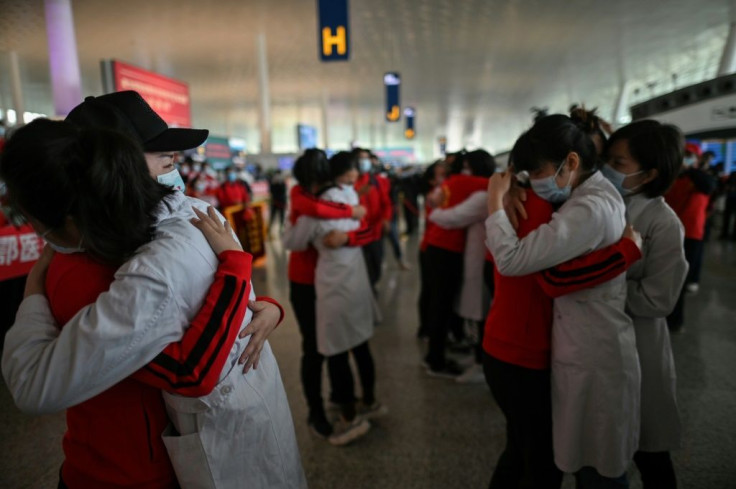Hospitals Packed With Patients, Prince George's County Is Maryland's COVID-19 Epicenter

KEY POINTS
- PG County hospitals need more staff and critical care beds
- 72 deaths, 2,356 confirmed cases as of Monday
- A quarter of all the cases in Maryland
Hospitals in Prince George’s County, Md. are sending some of the COVID-19 patients to facilities outside the county when they run out of beds, hospital officials said Tuesday. The county reported 72 COVID-19 deaths and 2,356 confirmed cases as of Monday, more than any other county in Maryland or the neighboring District of Columbia.
Prince George's is often cited as one of the richest African American-majority (64.4%) counties in the country. The county had more than 909,000 residents in 2018. Less than 10% lived in poverty.
Hospitals in the county are reporting higher-than-average rates of fatalities and confirmed positive cases, the latest evidence that the deadly virus is disproportionately affecting African American communities, according to the Post.
The county is home to about 15% of Maryland’s population but it reported a quarter of the state’s COVID-19 cases. Data analyzed by The Washington Post shows that 11 of the 15 zip codes in Maryland with the highest rates of infection are in Prince George’s.
The county has two hospitals with critical care units. Hospital representatives from each told the county council the facilities are out of beds and sending patients to other hospitals.
“Prince George’s County is the epicenter of the state,” Joseph Wright, interim chief executive of the University of Maryland Capital Region Health, was quoted by the Post.
As of Tuesday noon, 67 COVID-19 patients were being treated at the hospital and 17 other patients who were showing symptoms were awaiting test results. Wright said the mortality rate for coronavirus patients at the hospital is about 10%.
Min Godwin, the chief operating officer for the University of Maryland Capital Region Health, said state projections show the 385-bed hospital could need as many as 287 more beds by April 25.
The hospital system plans to reopen Laurel Regional Hospital, nestled between Baltimore and Washington, by April 24. This will add 90 beds, according to Godwin. The state is delivering tents and pods to Cheverly where intensive care patients can be treated in the coming days.
MedStar Southern Maryland Hospital Center reported 43 critically ill patients had to be moved to other MedStar facilities, said Chile Ahaghotu, vice president of medical affairs. The hospital has recently expanded its capacity to accommodate more intensive care patients and continues to add beds.
Ahaghotu told the Post 63 COVID-19 patients are being treated at MedStar Southern, 13 in intensive care. He said the hospital’s mortality rate from the disease has ticked upward, to 7.8%.
Black Americans are more likely to suffer from health problems that are some of the main triggers for coronavirus hospitalization, including asthma, diabetes and obesity. For each of those conditions, African Americans are above the national average by a percentage point or more — and further above the numbers for white, non-Hispanic Americans.
A Centers for Disease Control and Prevention study of the virus found that 33% of those who have been hospitalized nationally are African American — even though that racial group makes up only 13% of the general population. On the other hand, 45% of those in hospitals for the virus are white and non-Hispanic, even though that group makes up more than 60% of the overall population.
In 2018, 11.8% of the U.S. population lived in poverty, but the figures were 20.8% for African Americans, 17.6% for Hispanics and 25.4% for Native Americans. Those numbers mean minority populations are less likely to live healthy lifestyles; healthy foods and daily exercise are less likely to be part of daily routines, according to NBC.
© Copyright IBTimes 2025. All rights reserved.




















